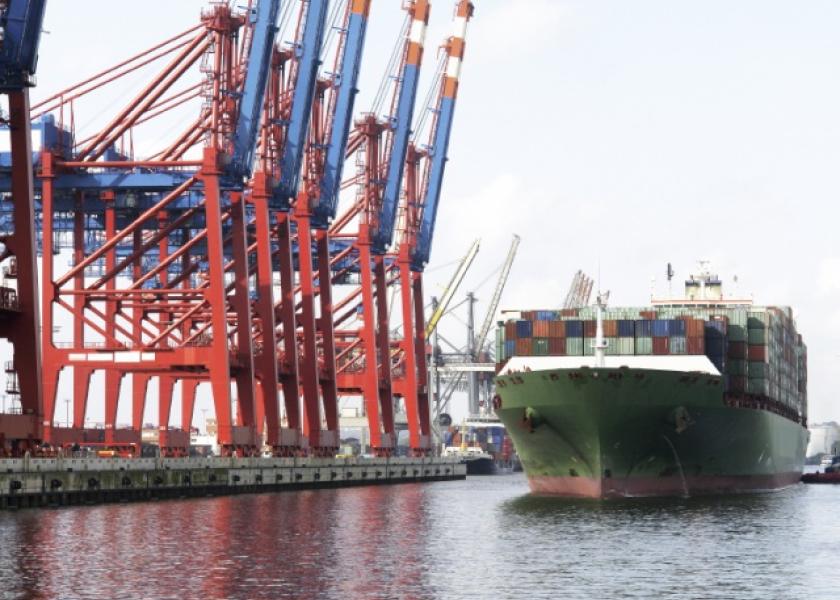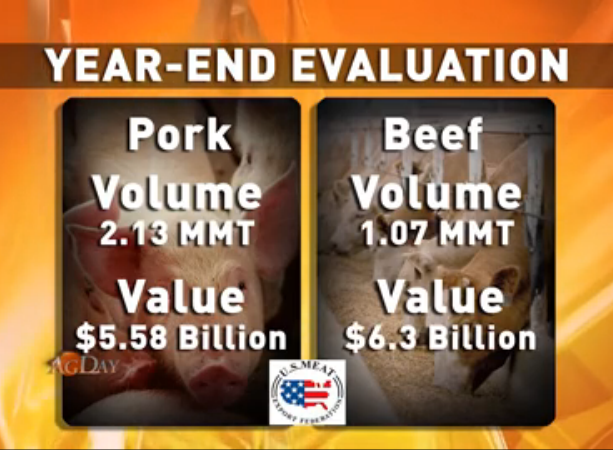Strong U.S. Dollar Didn't Help Meat Exports in 2015

The year-end numbers are in and both pork and beef fell in tonnage shipped year over year.
The U.S. Meat Export Federation (USMEF) says on the year pork exports dropped 2% in volume (2.13 Million Metric Tons) and 16% in value ($5.58 billion).
While on the beef side exports dropped double digits on the volume side, off 11% year over year (1.07 MMT).
Values were 12% below 2014 ($6.3 billion) for beef exports. This was the first full year decline in values since 2009.
Exports still account for nearly $280 of the value of every fed steer and heifer. As producers continue rebuilding the nations cow herd analysts think the export picture will improve in 2016.
“The brokers would call it a correction. But it was a tough year,” says Phillip Seng, President and CEO for USMEF.
Beef exports in 2015 found plenty of headwinds, fanned by high cattle prices and a strong U.S. dollar.
“It makes it more difficult because if the dollar has gotten stronger by 15 percent or 20 percent or 53 percent against the ruble or 15 percent like it is against the yen or the peso, that makes it 15 percent more expensive for the consumers in those markets to buy those products,” Seng adds.
The strong dollar impacted imports, too.
“Imports of course last year were very large. They were up about 17% primarily because the strength of the U.S. dollar draws more product in,” says Kevin Good, analyst with CattleFax. “Australia was liquidating cattle so they had a big supply and price of 90% trim was very high domestically so that drew a lot of product in.”
Drought in Australia forced cattle to the export market and pushed its own herd to its lowest levels in more than 20 years.
“Prices got very low from a producers perspective but for an exporter you're taking advantage of a very hungry U.S. market which certainly helped from that perspective,” says Matt Costello, analyst with Rabo AgriFinance.
Freshly inked free trade agreements with Korea, Japan and China didn’t hurt either.
But analysts don’t expect the same push out of Australia in 2016 as the country begins rebuilding its own her, opening the door for U.S. exporters.
“Their numbers are going to be down this year and as our numbers go up we are going to work very aggressively in these markets to supplant the Australians,” Seng relates.
Add to it larger supplies here at home, a softer dollar and lower prices, exports are expected to pick up in 2016.
“We would say anywhere from 3-6% depending on market openings and this kind of thing. It could even be more than that,” Seng says.
Seng adds 2015 did see some positives on the market development front. He says places like Singapore, Vietnam and the Caribbean are showing signs of increasing purchases of U.S. beef.
On the import front, CattleFax expects imports to the U.S. to dip 8% as cow slaughter here at home picks up.








